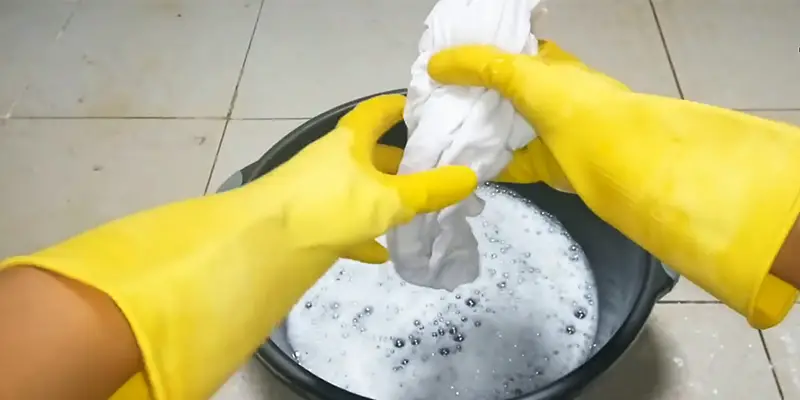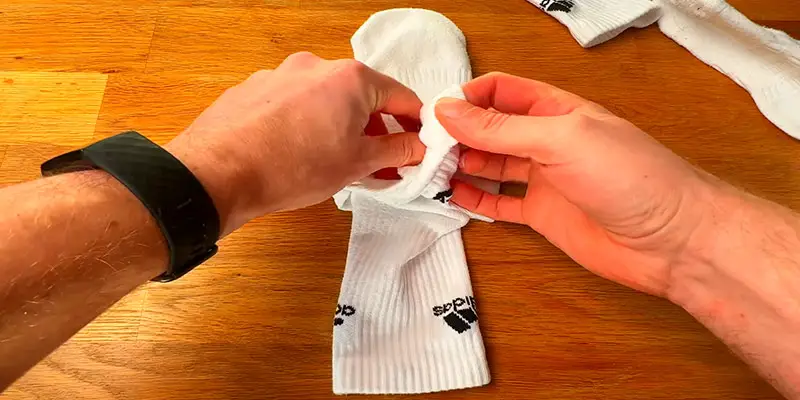Hi, I'm Christopher Bevans, the creator of SocksWiki.com. With a background in fashion design and a passion for innovation, I’m here to share my knowledge on socks from troubleshooting tips to detailed buying guides. I believe the right pair of socks can make all the difference, and through this site, I aim to help you find the perfect fit for every occasion.
Hi, I'm Christopher Bevans, the creator of SocksWiki.com. With a background in fashion design and a passion for innovation, I’m here to share my knowledge on socks from troubleshooting tips to detailed buying guides. I believe the right pair of socks can make all the difference, and through this site, I aim to help you find the perfect fit for every occasion.
Keeping colored socks vivid and stain-free can be a challenge, especially when dirt and grime take hold. To restore their original look, start by sorting your socks by color to prevent dye transfer.
Pre-treat the stains using a mixture of water and a mild detergent or baking soda paste, gently scrubbing with a soft brush.
For stubborn stains, soak the socks in a solution of white vinegar and water for 30 minutes before washing. Use a gentle cycle with cold water and a color-safe detergent in your washing machine.
Avoid using bleach, as it can cause discoloration. Air-drying your socks, rather than using a dryer, helps maintain their color and elasticity.
With these simple steps, your colored socks can stay looking fresh and new, free from unsightly dirt stains.
Simple Steps on How to Get Rid of Dirt Stains on Colored Socks
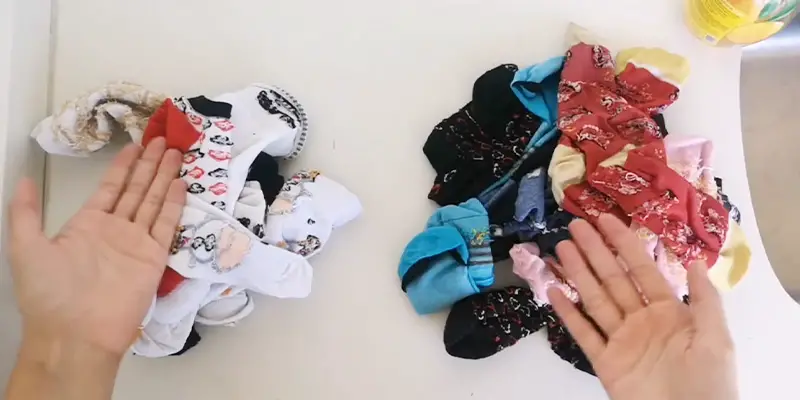
Dirt stains on socks are a common problem, especially for those who are active or spend a lot of time outdoors. Removing these stains can be challenging, but with the right approach, you can get your socks looking clean and fresh again.
Here’s a comprehensive guide on how do you get dirt stains out of socks:
Act Quickly
The sooner you treat a stain, the better the chances of removing it completely. Fresh stains are easier to handle than set-in stains.
As soon as you notice the stain, take action by blotting off any excess dirt. Immediate action prevents the dirt from penetrating deeper into the fabric fibers, which can make the stain much harder to remove later on.
Quick treatment can mean the difference between a completely clean sock and one with a permanent mark.
Pre-Treat the Stain
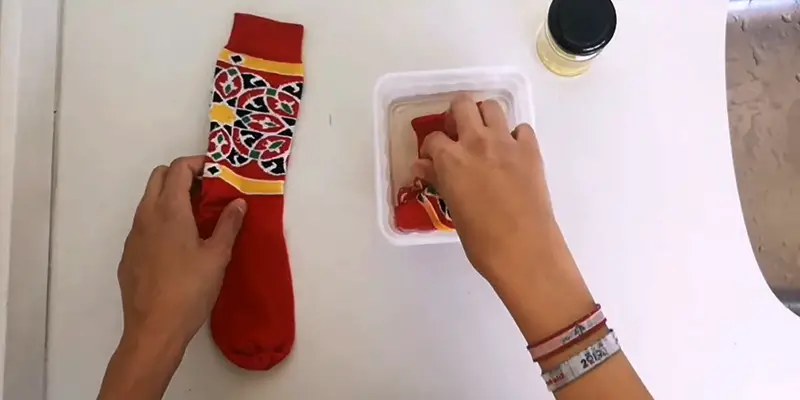
Rinse the stained area with cold water to remove as much dirt as possible. Avoid using hot water as it can set the stain by causing the dirt to bond with the fabric fibers.
Apply a small amount of liquid laundry detergent directly to the stain, focusing on the area with the most dirt.
Gently rub the fabric together or use a soft brush, such as a toothbrush, to work the detergent into the stain.
This helps to break down the dirt particles and loosen them from the fabric fibers, making them easier to wash out.
For particularly stubborn stains, you might consider using a stain remover spray or gel that is safe for colored fabrics.
Soak the Socks
Fill a basin with cold water and add a bit of oxygen bleach (color-safe bleach). This type of bleach is effective at removing stains without causing colors to fade.
Soak the socks for at least 30 minutes to allow the solution to penetrate and lift the dirt. For tougher stains, you can let them soak for several hours or even overnight.
Soaking gives the cleaning agents more time to break down the stain, making it easier to wash out later. During soaking, you can occasionally agitate the water to help dislodge the dirt from the fabric.
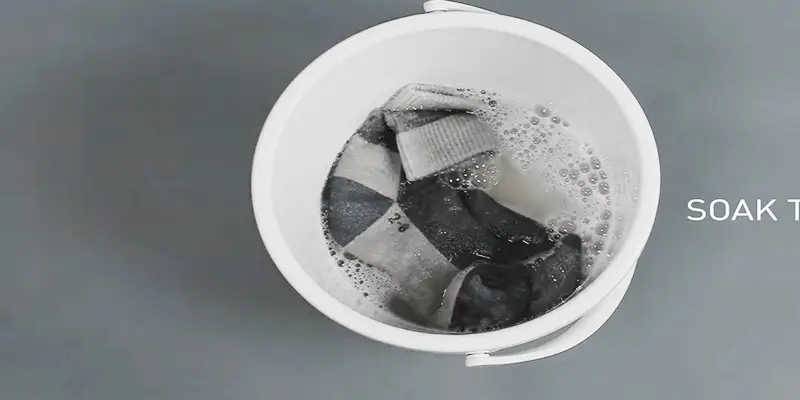
Wash the Socks
Wash the socks in the washing machine on a gentle cycle using cold water. Cold water prevents the stain from setting and preserves the color of the socks. Use a detergent that is safe for colored fabrics to maintain the vibrancy of your socks.
Avoid using bleach as it can cause discoloration and damage to the fabric. Make sure not to overload the washing machine, as this can prevent the socks from getting thoroughly cleaned.
If you have multiple pairs of stained socks, consider washing them separately from other laundry to prevent any dirt from spreading.
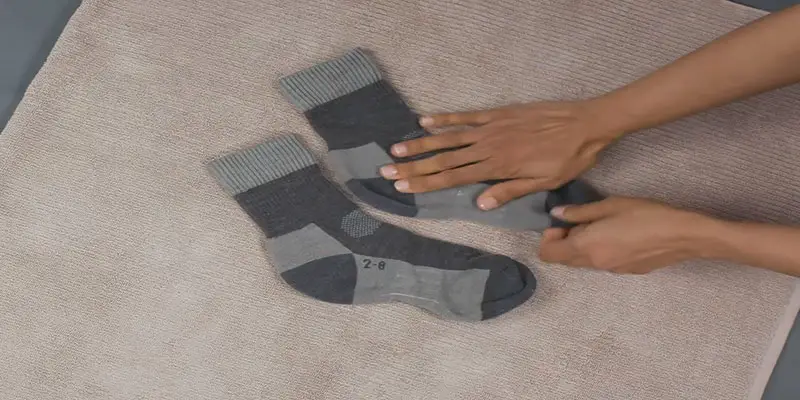
Inspect Before Drying
After washing, check the socks to see if the stain is gone. If the stain persists, do not put the socks in the dryer as the heat can set the stain permanently. Instead, repeat the pre-treatment and washing steps if necessary.
Air drying is recommended, as it allows you to inspect the socks again and avoid any potential shrinkage or color changes caused by the dryer.
If the stain is still visible after a second wash, you may want to try a different stain removal method before drying.
Dry Properly
Once the stain is removed, air dry the socks. Using a dryer can sometimes cause shrinkage or affect the color of the socks.
Air drying helps to maintain the size and shape of the socks, and it also reduces the risk of setting any remaining stain that might have been missed.
Lay the socks flat on a clean, dry towel or hang them up in a well-ventilated area to dry. Avoid direct sunlight, as prolonged exposure can fade the colors.
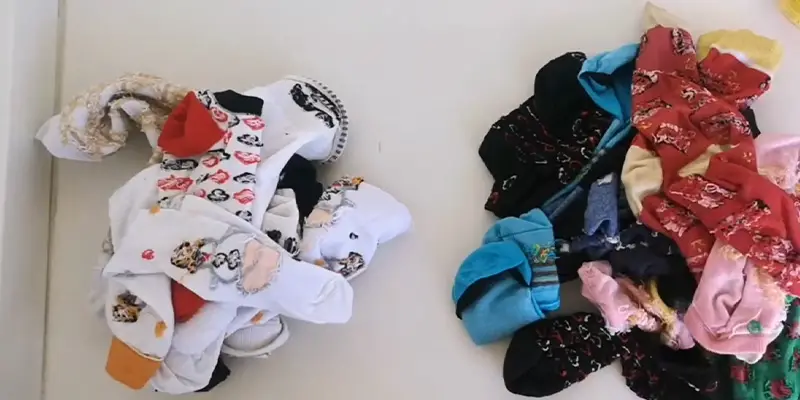
Additional Tips
For tough stains, you can make a paste with baking soda and water. Apply the paste to the stain, let it sit for 15-30 minutes, then rinse and wash as usual.
Baking soda is a mild abrasive that can help lift dirt without damaging the fabric. Another option is to mix equal parts white vinegar and water. Soak the stained area for about 30 minutes before washing.
Vinegar is a natural stain remover and deodorizer, effective for breaking down dirt and neutralizing odors. There are also various commercial stain removers available that are specifically designed for colored fabrics.
Follow the instructions on the product for best results, and always test on a small, inconspicuous area first to ensure it doesn’t affect the color.
Additionally, avoid using fabric softeners on stained socks as they can sometimes coat the fabric and make it harder to remove stains.
Why Do My Socks Still Look Dirty After Washing?
It can be frustrating to find that your socks still look dirty after washing. There are several reasons why this might happen, and understanding these can help you address the issue effectively.
Here are some common reasons why socks might still appear dirty after being washed:
Improper Pre-Treatment
If stains or heavy dirt are not pre-treated before washing, they may not come out completely.
Pre-treating involves applying a stain remover or liquid detergent directly to the stained areas and letting it sit for a few minutes before washing.
This step helps break down dirt and makes it easier for the washing machine to remove it.
Overloading the Washing Machine
Overloading the washing machine can prevent clothes, including socks, from being cleaned thoroughly.
When the machine is too full, there isn’t enough water and detergent to circulate properly, which means dirt and stains aren’t adequately removed.
Ensuring that the washing machine is only filled to the recommended level can improve cleaning efficiency.
Insufficient Detergent
Using too little detergent can result in clothes not being cleaned properly. Detergent helps lift dirt from the fabric and suspend it in the water so it can be rinsed away.
If there isn’t enough detergent, dirt may not be fully removed. Follow the detergent manufacturer’s guidelines for the appropriate amount based on the size and soil level of your laundry load.
Wrong Water Temperature
Using the wrong water temperature can affect the effectiveness of the cleaning process. Cold water is generally recommended for colored clothes to prevent fading, but it may not always remove dirt and stains as effectively as warm water.
For heavily soiled socks, using warm water (if the fabric care label allows) can help dissolve and remove dirt more effectively.
Low-Quality Detergent
Not all detergents are created equal. Some may not be strong enough to remove tough stains and dirt.
If your socks consistently come out of the wash looking dirty, consider switching to a higher-quality detergent or one specifically designed for heavy-duty cleaning.
Worn-Out Fabric
Over time, the fabric of socks can become worn and more prone to retaining dirt. If your socks are old and have been washed many times, they might have accumulated dirt and stains that are difficult to remove completely.
In such cases, it might be time to replace them with new pairs.
Hard Water
Hard water, which contains high levels of minerals like calcium and magnesium, can reduce the effectiveness of detergent, making it harder to remove dirt and stains.
If you have hard water, you might notice that your clothes, including socks, don’t get as clean. Using a water softener or a detergent designed for hard water can help mitigate this issue.
Solutions and Tips
- Pre-Treat Stains: Always pre-treat visible stains before washing. Use a stain remover or a bit of liquid detergent directly on the stains.
- Avoid Overloading: Make sure the washing machine is not overloaded. Clothes need space to move around for effective cleaning.
- Use the Right Amount of Detergent: Follow the detergent manufacturer’s guidelines to use the correct amount based on the soil level and size of your laundry load.
- Check Water Temperature: Use warm water for heavily soiled socks if the fabric care label allows. Cold water is suitable for most regular loads but may not always be sufficient for tough dirt.
- Upgrade Detergent: Consider using a high-quality or heavy-duty detergent if your current one is not performing well.
- Replace Old Socks: If your socks are old and worn, consider replacing them with new ones, as older fabrics may not clean as well.
- Address Hard Water Issues: If you have hard water, consider using a water softener or a detergent designed to work well with hard water.
How Do You Get Dirt Stains Out of Colored Clothes
Dirt stains on colored clothes can be particularly challenging because you need to remove the stains without damaging the vivid colors. With the right techniques and products, you can effectively tackle these stains.
Here’s a detailed guide on how to get dirt stains out of colored clothes:
Act Quickly
Acting quickly is crucial when dealing with dirt stains on colored clothes. The longer the dirt sits on the fabric, the harder it becomes to remove.
As soon as you notice the stain, gently blot off any excess dirt with a paper towel or cloth. Avoid rubbing, as this can push the dirt deeper into the fabric fibers and spread the stain.
Pre-Treat the Stain from the Colored Clothes
Start by rinsing the stained area with cold water to remove as much dirt as possible. Avoid using hot water, as it can set the stain.
Apply a small amount of liquid laundry detergent directly to the stain. Gently rub the fabric together or use a soft brush, such as a toothbrush, to work the detergent into the stain.
This helps to break down the dirt particles and loosen them from the fabric. Let the detergent sit on the stain for about 10-15 minutes to allow it to penetrate the dirt.
For extra effectiveness, you can also use a stain remover specifically designed for colored fabrics.
Soak the Clothes
Fill a basin with cold water and add a bit of oxygen bleach, which is safe for colored fabrics. Oxygen bleach is effective at breaking down stains without causing colors to fade.
Soak the stained garment for at least 30 minutes. For more stubborn stains, you can let it soak for several hours or even overnight.
Soaking allows the cleaning solution to work into the fabric and lift the dirt from the fibers. Occasionally agitate the water to help dislodge the dirt.
Wash the Clothes
After soaking, wash the garment in the washing machine on a gentle cycle using cold water. Cold water helps to prevent the stain from setting and preserves the color of the fabric.
Use a detergent that is safe for colored fabrics. Avoid using chlorine bleach, as it can cause discoloration and damage to the fabric.
Ensure that the washing machine is not overloaded, as this can prevent the clothes from being cleaned thoroughly.
For extra cleaning power, you can add a bit of white vinegar to the rinse cycle, which helps to remove any remaining detergent and stains.
Inspect the Clothes Before Drying
Once the washing cycle is complete, inspect the garment to ensure the stain is gone. If the stain persists, do not put the garment in the dryer, as the heat can set the stain permanently.
Instead, repeat the pre-treatment and washing steps as needed. If the stain remains stubborn, consider trying a different stain removal method or product.
Air drying is recommended, as it allows you to check the garment again for any remaining stains before subjecting it to heat.
Dry the Clothes Properly
When the stain is removed, air dry the garment. Using a dryer can sometimes cause shrinkage or affect the color of the fabric.
Air drying helps to maintain the size and shape of the garment and reduces the risk of setting any remaining stain.
Lay the clothes flat on a clean, dry towel or hang them up in a well-ventilated area to dry. Avoid direct sunlight, as prolonged exposure can fade the colors.
Additional Tips
For particularly tough stains, consider using a baking soda paste. Mix baking soda with a small amount of water to form a paste, then apply it to the stain and let it sit for 15-30 minutes before rinsing and washing as usual.
Baking soda is a mild abrasive and natural deodorizer that can help lift dirt without damaging the fabric.
Alternatively, a solution of equal parts white vinegar and water can be effective. Soak the stained area for about 30 minutes before washing.
Vinegar is a natural stain remover and deodorizer that can break down dirt and neutralize odors.
Various commercial stain removers are available that are specifically designed for different types of stains and fabrics.
Follow the instructions on the product for the best results, and always test on a small, inconspicuous area first to ensure it doesn’t affect the color.
Additionally, avoid using fabric softeners on stained clothes as they can sometimes coat the fabric and make it harder to remove stains.
Frequently Asked Questions
Can I use hot water to remove dirt stains from colored clothes?
No, it’s best to use cold water. Hot water can set the stain and cause colors to fade or run.
What if the stain doesn’t come out after the first wash?
If the stain persists, repeat the pre-treatment and washing steps. Avoid using the dryer until the stain is completely removed, as heat can set the stain.
Can I use bleach on colored clothes?
No, avoid using chlorine bleach on colored clothes as it can cause discoloration and damage the fabric. Use oxygen bleach, which is safe for colors.
How do I prevent dirt stains from setting in?
Act quickly and pre-treat the stain as soon as possible. Rinse with cold water and apply detergent or a stain remover before washing.
Is it okay to air dry colored clothes in direct sunlight?
It’s better to air dry colored clothes in a well-ventilated area away from direct sunlight, as prolonged exposure to sunlight can fade the colors.

Hi, I'm Christopher Bevans, the creator of SocksWiki.com. With a background in fashion design and a passion for innovation, I’m here to share my knowledge on socks from troubleshooting tips to detailed buying guides. I believe the right pair of socks can make all the difference, and through this site, I aim to help you find the perfect fit for every occasion.
- Latest Posts by Christopher Bevans
-
What Socks to Wear With Cowboy Boots?
- -
Grip Socks vs Regular Socks: Which One Should Wear?
- -
Are White or Black Socks Better: Comfort, Style, and Function
- All Posts

